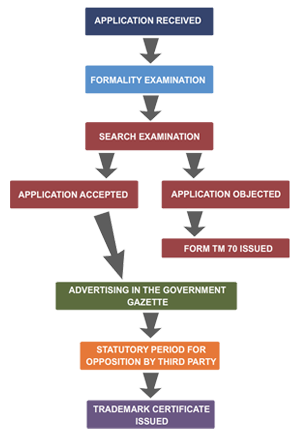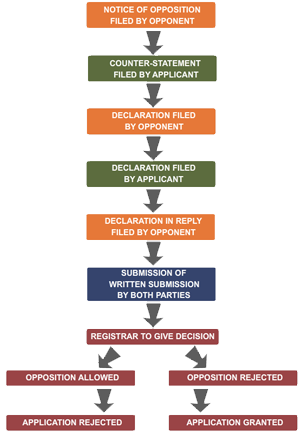

 Fundamentally, trademarks identify a particular business in its trade. In other words, it serves as a badge of origin.
Fundamentally, trademarks identify a particular business in its trade. In other words, it serves as a badge of origin.
Call it a 'company brand' if you may.
By picking the right sign to distinguish your goods and services along with proper advertising, a trademark could be your company's most valuable asset.
Registered trademarks confer exclusive rights to the owner of the mark to use and maintain such marks, provided that there are no objections from the respective countries' trade marks offices or third parties against its use.
In the event of any obstacles encountered by your mark, our legal people will be ready to step in for you.
A trademark is a unique symbol used to designate the origins of goods and services, hence, making them distinguishable.
This includes names, logos, or any other identification devices.
A registrable trademark shall contain at least one of the following particulars:
Duration Of Protection
For trademark, the duration of protection is 10 years, and renewable perpetually every 10 years.
Any person claiming to be the proprietor of the mark may apply for its registration provided that he is either using the mark already or proposes to use it.Only the legal entity, which owns the mark, can apply to register it. Any person signing on behalf of the owner must state the capacity in which he does so.
Applicants may be natural persons or juristic persons. Juristic person includes all bodies capable of suing or being sued at law.
Individuals and incorporated bodies are thus both "persons" within the meaning of the Act. An individual validates a legal document whether or not it is under seal, by his signature (which is unique).A body corporate cannot have a signature and normally validates documents by its seal. However, officials of the corporate body may sign on its behalf.
Partnerships
Partnerships may own trade marks and may apply for their registration. The application must contain the full names of all the partners and must be signed by all of them or by a qualified partner who states that he signs on behalf of the partnership-regulation 7(1).
Joint Ventures
When two or more legal entities will combine in a particular enterprise and may use a trade mark solely within that joint venture. In such a case, any application to register the mark must be signed by, or on behalf of, all members of the venture.
Government and other Official Bodies
Government departments, municipalities, organisations created by the State, and similar bodies operating with government authority may apply to register marks which they own.
Renewals of TrademarkThe registration of a trade mark shall be for a period of ten years but may be renewed from time to time in accordance with the Act. The duration is calculated from the date of application.
If there is no renewal application filed on a date not less than one month and not more than two months before the expiration of the last registration of a trade mark, the Registrar shall notify the registered proprietor about the impending expiration of said mark.
If no such renewal has been undertaken, the Registrar will cause the mark to be removed from the Register. Restoration is possible, subject to the prescribed conditions.
The registration of a trade mark shall not be renewed where the application for renewal is made after one year lapsed from the date of expiration of the last registration.
The registration of a trade mark shall be for a period of ten years but may be renewed from time to time in accordance with the Act. The duration is calculated from the date of application.
If there is no renewal application filed on a date not less than one month and not more than two months before the expiration of the last registration of a trade mark, the Registrar shall notify the registered proprietor about the impending expiration of said mark.
If no such renewal has been undertaken, the Registrar will cause the mark to be removed from the Register. Restoration is possible, subject to the prescribed conditions. The registration of a trade mark shall not be renewed where the application for renewal is made after one year lapsed from the date of expiration of the last registration.

There are many signs which fall within the definition of a mark, and which are capable of being used as trade marks, but which are specifically prohibited from being registered as trade marks for one reason or another.
The common group comprises those marks, which are likely to confuse or deceive the public.
In addition to these general categories, there are certain specific prohibitions.
For some, refusal is mandatory; for others, refusal is a matter for the Registrar's discretion.
provides that a mark, or part of a mark, shall not be registered as a trade mark "if it contains or comprises any scandalous or offensive matter or would not otherwise be entitled to protection in any court of law.
The United Kingdom statute is not the same as that employed in the Malaysian Act; it prohibits marks, which are "contrary to law or morality, or any scandalous design".
In seeking to apply these principles to trade mark registration in Malaysia, it should be noted that Malaysia is a multi-racial country and proper regard should be had to the religious susceptibilities of substantial minorities.
In the author's view, care and sensitivity must be undertaken to avoid conflicting marks from the religious, cultural and racial prospective.
gives the Registrar the responsibility of determining what matter, in a trade mark, is or might be prejudicial to the interest or security of the nation.
It may be that a mark contains an inflammatory statement or words, which could be considered so.
Determining which marks are contrary to law or unprotectable in a court presents more of a problem.
If a mark consists of a device, it may be assumed that the applicant owns the copyright in it.
provides that any trade mark, which consists of, or contains, any of the following marks must be refused registration:
Anyone who falsely represents that an unregistered mark is in fact registered is guilty of a criminal offence and liable to a fine or period of imprisonment, or both - Regulation 13 provides a list of additional prohibited marks including; "To counterfeit this is a forgery", "Registered Trade Mark", "Registered service mark" or any words to the like effect of these prohibited words as well as "Bunga Raya" and the representations of the hibiscus.
The examination of every application for registration includes a search for prior rights.
In deciding any question of possible conflict between two applications or between an application and a registered trade mark, there are two main factors before raising an objection under this section.
When comparing cases, trademark examiners will consider each mark as a whole. It is clear that marks are identical if they are the same in every detail when compared side by side.
Any person may, within the prescribed time from the date of the advertisement of an application for the registration of a trademark, give notice to the Registrar and applicant of opposition to the registration.
The notice shall be filed according to the prescribed manner within the above said time frame.
If no opposition were filed during the statutory opposition period, then the Registrar will cause the trademark application to be registered.
Any person may within two months from the date of any advertisement in the Gazette of an application for registration of a trade mark give notice in writing to the Registrar to oppose the registration of any marks.
The usual grounds for an opposition to a trade mark application would include:
